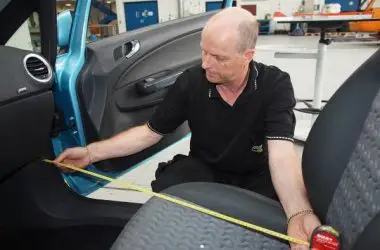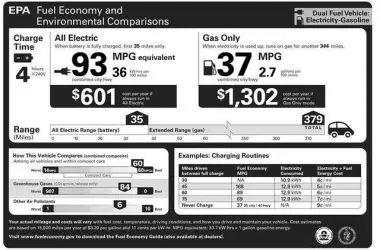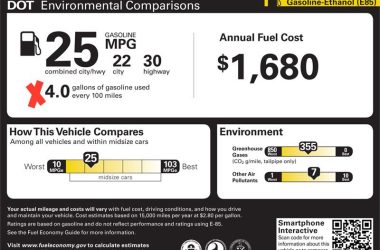Hatchbacks are popular for their sporty style and versatile cargo space compared to sedans. However, the sloped rear design that gives hatchbacks their signature look can also limit cargo capacity and make packing bulkier items a challenge. While hatchbacks will never have as much room as larger SUVs, there are clever ways to maximize the storage you do have. This guide covers simple tips for loading more gear and equipment into your hatchback’s cargo area.
According to Popular Mechanics, manufacturers often highlight the total cargo volume of hatchbacks and crossovers. But this spec can be misleading, as it includes space above the rear seats that is only accessible when they’re folded down. In reality, the useable floor area with the seats up is considerably less. Careful packing and loading techniques are needed to make the most of your hatchback’s cargo space.
Measure Your Hatchback’s Cargo Area
Before trying to maximize the cargo space in your hatchback, it’s important to accurately measure the interior dimensions. This will help you determine what size items can fit and how to best utilize the available space.
To measure the cargo area length, use a tape measure to determine the distance between the back of the rear seats and inside of the hatch door when it’s closed. Be sure to measure across the widest part of the floor. For width, measure the distance between the wheel wells at the widest point. For height, measure from the floor to the inside ceiling at the tallest point.
Some key dimensions to note are:
- Length with rear seats folded down vs upright
- Width at widest point near wheel wells
- Height from floor to ceiling at tallest point
Tools like a telescoping measuring tape, yardstick, and soft measuring tape can help you get accurate interior cargo measurements. Refer to your owner’s manual for factory cargo volume specifications as well. Knowing the precise width, length and height will help optimize packing and storage.
Source: How Cars.com Measures Cargo Space
Fold Down the Rear Seats
One of the easiest ways to maximize cargo space in a hatchback is to fold down the rear seats. Most hatchbacks allow you to fold the rear seats flat, creating a large and continuous cargo area. Here are some of the pros and cons of folding down the rear seats:
Pros:
- Folding the rear seats can more than double your available cargo space. For example, the Honda Civic hatchback has 25.7 cubic feet of space behind the rear seats, but this expands to 46.2 cubic feet with the seats folded down (Source).
- With the rear seats folded, you can fit large and awkwardly shaped items in your hatchback that wouldn’t normally fit.
- Folding the seats creates a flat and continuous load floor, which makes loading cargo easier.
- Most hatchbacks allow you to fold the rear seats from inside the cargo area, without having to open the rear doors.
Cons:
- You lose the ability to carry rear passengers when the seats are folded down.
- Valuables in the cargo area are less secure and hidden from view without the rear seatbacks upright.
- Some items may slide around more without the upright seatbacks keeping them contained.
Overall, folding down the rear seats is one of the simplest and most effective ways to maximize cargo capacity in a hatchback. Just keep the pros and cons in mind when deciding whether to utilize the extra space.
Use Cargo Nets and Straps
Cargo nets and straps are an easy way to secure items in your hatchback’s cargo area and prevent them from shifting around during transport. There are a few types of cargo nets and straps to consider:
Hatchback cargo nets attach to existing anchor points or hooks in the cargo area to stretch across and contain items. They come in various sizes to cover different sections of the space and often feature pockets for small items. For example, Mazda offers a factory cargo net designed specifically for the Mazda 3 hatchback.
Luggage straps wrap around suitcases, boxes, and other large items to hold them in place. Ratchet straps offer adjustable tension while elastic straps conform to different shapes and sizes. Straps usually connect to the cargo area’s tie-down hooks.
Specialty nets and straps are also available such as a pet barrier to contain dogs in the cargo space. Tailored cargo organizers have integrated nets and straps to hold specific items in fixed spots.
When shopping for a cargo net or straps, look for durable materials and designs made specifically for your vehicle. Proper installation is key – securely attach to factory anchor points to safely contain cargo.
Optimize Underfloor Storage
Many hatchbacks come equipped with some underfloor storage in the spare tire well, which can provide a surprising amount of extra cargo capacity. Here are some tips for making the most of this hidden storage space:
Remove the spare tire and any tools or accessories stored with it. This will maximize the open storage area. Just be sure to find a secure place to store the spare outside of the car so it’s available in case of a flat tire. Some people store the spare in their garage or shed.1
Use storage bins or cargo nets to organize items in the spare tire well. This will prevent things from shifting around while driving. Straps can also be used to secure larger items.
Consider adding higher sides or a cover for the underfloor storage area. That will allow you to stack items higher without them falling out. Some companies sell custom covers and enclosures designed to fit the spare tire wells of certain vehicle models.
Storing heavier items lower in the underfloor well will help lower the vehicle’s center of gravity, which can improve handling and stability.
Just be mindful not to exceed your vehicle’s weight limits when packing the underfloor storage. Overloading can affect performance and safety.
Consider a Cargo Carrier
One way to maximize cargo space in a hatchback is to add an external cargo carrier. Cargo carriers attach to the roof or rear of the vehicle and provide additional storage without taking up interior cargo space.
There are two main types of cargo carriers to consider:
Roof Mounted
Roof mounted cargo carriers attach to your existing roof racks. They sit on top of your vehicle and provide space to pack gear like luggage, camping equipment, storage bins, and more. The main benefit of a roof mounted carrier is that it doesn’t take up any interior cargo space and it keeps gear up and out of the way.
Considerations for a roof mounted cargo carrier include reduced gas mileage due to increased wind resistance, height restrictions in parking garages, low overhangs, etc. You’ll also need to have roof racks already installed and make sure your roof can bear the added weight.
Rear Mounted
Rear mounted cargo carriers attach to a trailer hitch at the rear of your vehicle. They hang out on a platform behind your hatchback. Rear mounted carriers have the benefit of being at trunk level so loading and unloading gear is easy. They also have less impact on gas mileage.
The downside of a rear carrier is that it will block access to the rear hatch/trunk when installed. It also extends the length of your vehicle so you need to be careful when backing up or parking.
When choosing a cargo carrier, consider where you will mount it, how much added storage you need, how it impacts gas mileage and accessibility, and your budget.
Organize with Storage Bins
Using plastic storage bins is an easy way to optimize cargo space in your hatchback. Look for collapsible bins that can fold flat when not in use. This allows you to store them out of the way until you need the extra organization.
For small items, try bins designed for toolbox organization. These typically have adjustable dividers so you can customize the layout. Use them to store things like chargers, first aid kits, flashlights, and other gear you want to keep organized.
For larger cargo, look for sturdy bins designed for commercial use. Many feature latches to keep the lids closed securely during transport. These are great for groceries, outdoor equipment, and other items prone to shifting around.
Storage bins designed specifically for automotive use are another good option. They often conform to the precise dimensions of your cargo area for a custom fit. Some also include non-slip surfaces to keep the bins from sliding.
When choosing storage bins, look for durable plastic construction that won’t crack or warp. Opt for bins in bright colors to make contents easier to identify. Just remember to secure all items, as plastic bins won’t contain cargo in an accident.
Pack Efficiently
Fitting the maximum amount of cargo requires packing items tightly and efficiently. Avoid leaving empty areas by using every available space. Here are some tips for efficient packing:
Utilize vertical space by stacking items. Place heavy items on the bottom and lighter cargo on top. Fill any gaps with smaller items like shoes or purses. According to Cottage Life, packing vertically utilizes all the height in your cargo area.
Arrange items so they fit tightly against each other. Avoid rounded items rolling around loose. Use packing cubes, bags or boxes to keep contents stable and maximize space. As Consumer Reports advises, “Use rectangular plastic bins, laundry baskets, and other rigid containers, securing them with cargo nets and straps.”
Roll items like blankets or towels to fill gaps efficiently. Consumer Reports states rolling items helps “fill otherwise wasted spaces between bulky, irregularly shaped objects.”
Consider your order of packing. Load larger, heavier items first. Then fit in smaller items to fill gaps. Mast Service Center recommends always starting with larger luggage. Build up layers starting from the floor.
Utilize any extra compartments in your hatchback, like underfloor storage. Even small pockets around the edges can hold smaller items. Fully using all storage areas ensures you maximize cargo capacity.
Remove Unnecessary Interior Parts
One way to maximize cargo space in your hatchback is by removing any unnecessary interior trim pieces or panels from the cargo area. According to this SwedeSpeed forum thread, you can often carefully pry out and remove interior plastic trim pieces, side panels, and other non-structural elements. Just be sure not to remove anything that is part of the vehicle’s safety systems.
For example, in many GM hatchbacks like the Chevy Traverse, you can remove the entire rear side panel trim fairly easily. There are typically some screws to remove from behind the side panel, as discussed in this IH8Mud forum thread. Then you can pull the panel off and gain a few more precious inches of width in your cargo area.
However, do not remove things like your rear seats, which often play a safety role in a collision. Focus only on purely cosmetic trim pieces that can safely be taken out. And be very careful not to damage any wiring or critical components behind the panels. Refer to your owner’s manual or online forums for guidance on what can and cannot be removed.
Consider Suspension Mods
One way to maximize cargo space is to modify the suspension of your hatchback. Lowering the vehicle’s ride height can provide more usable vertical space in the cargo area. Some options for lowering include:
Lowering springs – These replace the factory springs to lower the vehicle’s ride height. Stiffer lowering springs are available for improved handling as well. Brands like Eibach and H&R offer quality lowering springs.
Air suspension – For the ultimate in adjustability, air suspension allows you to raise or lower your vehicle’s ride height at the push of a button. Air suspension kits are available from companies like Air Lift. You can lower the vehicle when hauling cargo, and raise it back up for normal driving.





